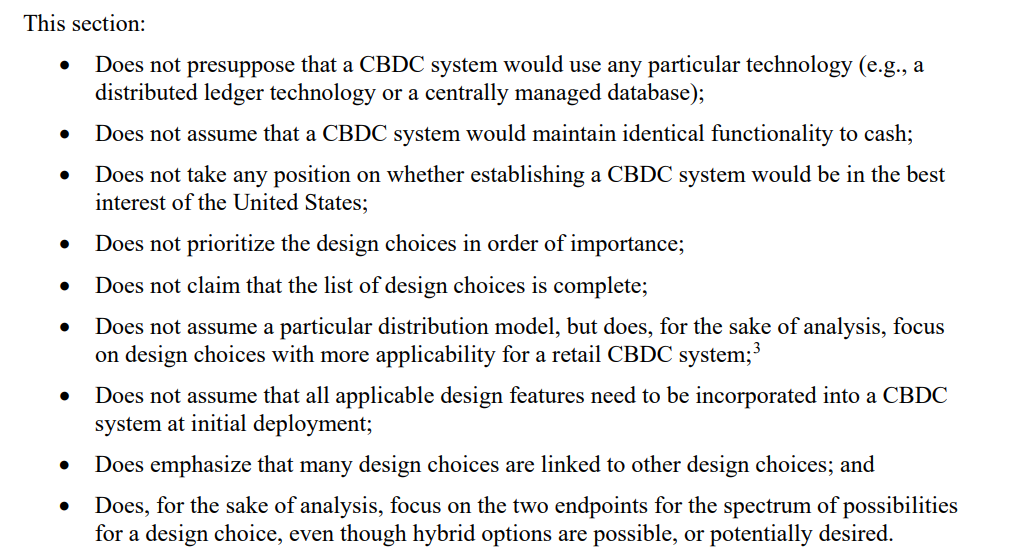As directed by the President of the United States, Joe Biden, the Office of Science and Technology Policy (OSTP) submitted a report analyzing the design choices for 18 central bank digital currency (CBDC) systems for possible implementation in the US.
The technical analysis of the 18 CBDC design choices was made across six broad categories – participants, governance, security, transactions, data and adjustments. The OSTP foresees technical complexities and practical limitations when trying to build a permissionless system governed by a central bank, adding:
“It is possible that the technology underpinning a permissionless approach will improve significantly over time, which might make it more suitable to be used in a CBDC system.”
However, the analysis assumed there is a central authority and a permissioned CBDC system.

Helping policymakers decide on the ideal US CBDC system, the OSTP report highlighted the implications of including third parties in the two design choices under the ‘participants’ category – transport layer and interoperability. For governance, the report weighed various factors related to permissioning, access tiering, identity privacy and remediation.
Other important factors OSTP wants policymakers to consider include cryptography and secure hardware (for security), signatures, transaction privacy, offline transactions and transaction programmability (for transactions), data model and ledger history (for data) and fungibility, holding limits and adjustments on transactions and balances (for transactions).
The technical evaluation for a US CBDC system highlighted the report’s inclination toward an off-ledger, hardware-protected system. Upon the launch of a US CBDC, the report will eventually highlight the various trade-offs policymakers decided to make when finalizing the design choices.
Related: White House publishes ‘first-ever’ comprehensive framework for crypto
On Sept. 8, the OSTP recommended monitoring and regulation while weighing the environmental and energy impact of crypto assets in the US.
The related OSTP report highlighted that crypto assets use approximately 50 billion kilowatt-hours of energy per year in the U.S., which is 38% of the global total, while adding:
“Noting direct comparisons are complicated, Visa, MasterCard, and American Express combined […] consumed less than 1% of the electricity that Bitcoin and Ethereum used that same year, despite processing many times the number of on-chain transactions and supporting their broader corporate operations.”
The report further noted the high energy consumption of proof-of-work (PoW) staking in crypto assets.


